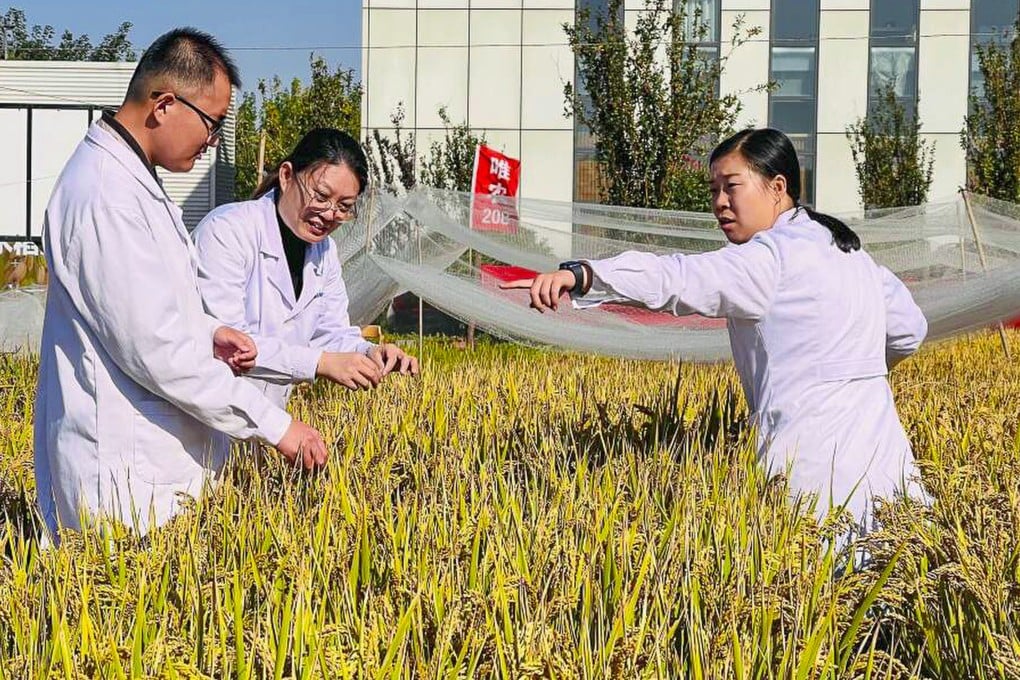China food security: advanced rice thriving where most vegetation dies – the salt deserts of Xinjiang
- China’s genetically modified rice doesn’t mind a bit of salt in the soil, and the grain is said to be making salinated land arable for other seasonal crops such as cotton
- Beijing has been casting the spotlight on Xinjiang for its achievements in bolstering the nation’s self-sufficiency drive

On the rim of Xinjiang’s desert, in a region where the soil is so salty that most vegetation refuses to grow, China is touting rising outputs of salt-tolerant rice as further evidence that its food-security drive has taken root.
Beijing expects rising yields of genetically modified crops, especially in remote and rural areas where arable soil is rare, to help serve as a long-term solution to ensuring that the nation’s 1.4 billion people are kept fed.
After an on-site inspection on Friday, an official survey group said that the final yield of salt-tolerant rice in Aksu – in the inland Xinjiang Uygur autonomous region, at the edge of the Taklimakan Desert in western China – was estimated to be 573.8kg (1,265 pounds) per mu, according to Xinhua, using a Chinese unit of area equal to 0.0667 hectares, or 0.16 acres.
China’s main rice-producing regions are located in the southern and northeastern provinces, where the geography and seasonal climates are favourable for rice cultivation.